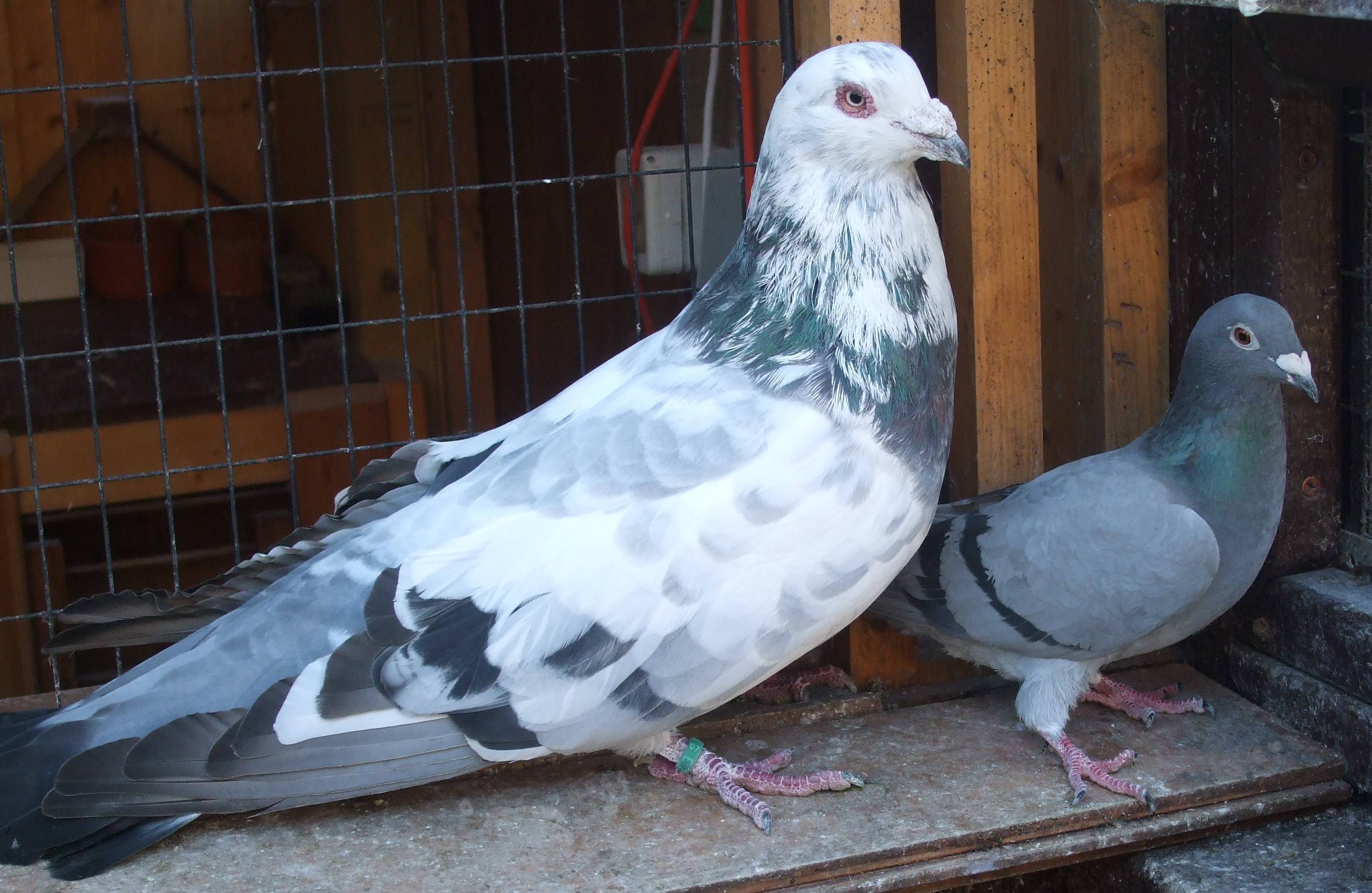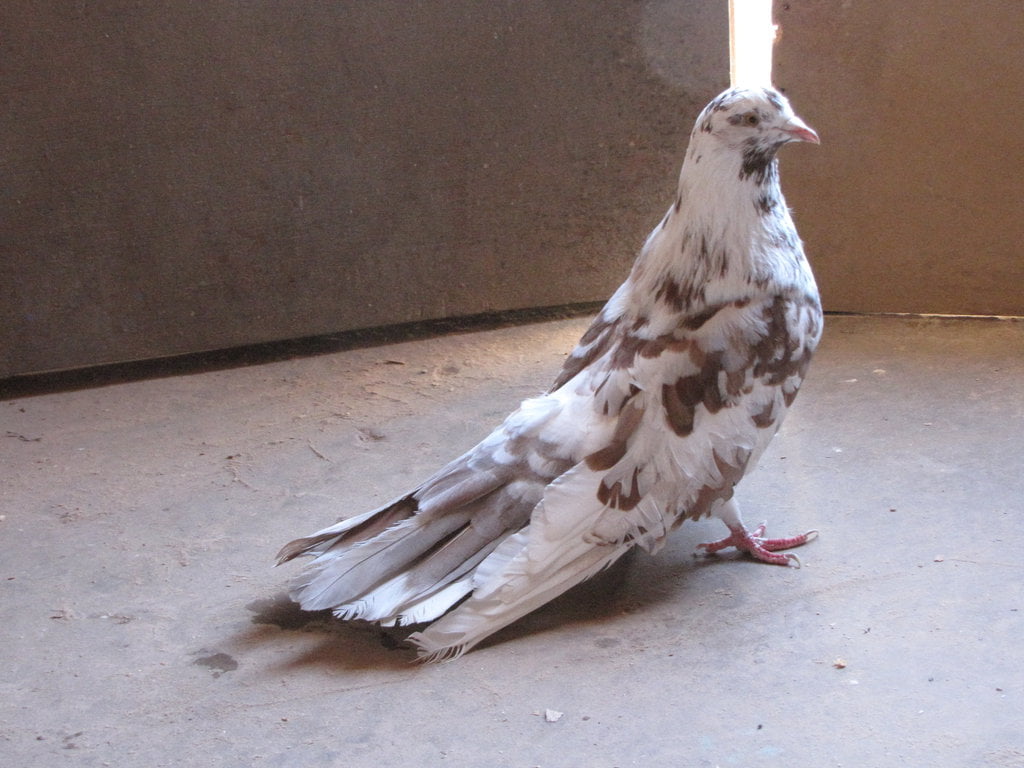Giant Runt Pigeons: Everything You Need To Know + Breeders & Care
Have you ever considered the fascinating world of pigeons, beyond their common presence in our urban landscapes? Delving into the world of the American Giant Runt pigeon reveals a breed sculpted not by fleeting aesthetics, but by substantial, measurable form.
The American Giant Runt, a testament to selective breeding, represents a departure from mere appearance. Its a breed where actual body structure dictates size, surpassing the allure of feather length or superficial traits. The development of this breed showcases the dedication of breeders, particularly those in the USA, who sought a pigeon with a specific physique: shorter, yet powerfully built. Some specimens have been recorded to weigh in at a remarkable 1.4 kilograms, a testament to their substantial build.
| American Giant Runt Pigeon: Breed Overview | |
|---|---|
| Origin | United States of America (Developed) and Ancient Rome (Roots) |
| Purpose | Primarily bred for meat production (utility). Also popular in shows. |
| Characteristics |
|
| Breeding History |
|
| Environment Preference | Rural and suburban environments, offering open spaces for flight. |
| Note | Not a protected breed. |
| Similar Breeds | Rumbler. Other Runt varieties such as Rmertauben, Romain, Romer. |
| Reference | Pigeonfarms.com |
The American Giant Runt's development is a story of deliberate choices. Breeders didn't simply stumble upon this breed; they actively pursued specific characteristics. The initial runt was crossed with various other pigeon types, a strategic move aimed at refinement. The primary goal was to create a pigeon breed that was wider and more compact. This build would enhance its power, capitalizing on increased body mass.
Across the United States, a network of breeders has emerged, dedicated to these magnificent birds. These dedicated enthusiasts aim to promote their breeds, offering a resource for anyone interested in connecting with others sharing their passion. The focus isnt merely on transactions; its about building a community, sharing knowledge, and celebrating the diversity of the pigeon world.
However, it's crucial to note that these directories arent classified sections. The inclusion of breeders doesnt guarantee the immediate availability of pigeons for sale. This serves to foster connection, a place for breeders to find each other.
The influence of breeding practices extends beyond the American Giant Runt. The quest for specific traits is common across various breeds. In France, breeding studies utilizing Roman Giants were significant, particularly when crossed with breeds like the English Blower and Old German Pigeons. This focus on exaggeration of traits reflects a deeper drive to enhance existing qualities. Many of the domestic pigeon breeds trace their lineage back to the Rock Pigeon (Columba livia), the foundational wild species.
The American Giant Runt, while impressive, isn't always ideally suited for every setting. Breeders recommend, if possible, keeping them in rural or suburban settings. This allows them the space they need to fly freely, and to live in a more natural environment. They are often happiest when they have room to spread their wings.
When seeking these pigeons, you might start by exploring local options. Finding breeders near your location is always the most direct approach. Online resources such as pigeonfarms.com may offer options, but availability can fluctuate. The market can be dynamic. And the world of avian enthusiasts has a diverse set of individuals.
The world of pigeon breeders is filled with dedicated individuals. They may be dedicated to a specific breed, or several breeds. They may belong to pigeon clubs, or network to standardize traits. The focus on cultivating specialized breeds showcases the love and dedication each breeder has.
The world of pigeon breeding is as complex as it is captivating. Breeders frequently emphasize the importance of understanding avian health and following ethical breeding practices. The success of the American Giant Runt, like any breed, hinges on responsible care and attention to detail.
The significance of size, not mere appearance or feather length, is paramount. The American Giant Runt is proof of this principle. With some birds weighing over 1.4 kilograms, the breed underscores the importance of actual, physical dimensions.
The process involves crossing the original runt with other breeds, carefully selecting traits. This exemplifies the breeders dedication to their craft. The American Giant Runt wasn't a random creation; it's the result of a defined goal.
Breeders in America, in an effort to refine this breed, had a distinct goal: to emphasize the defining characteristics of the original stock. They aimed to create a pigeon with a broad, compact structure, which would ultimately enhance its strength and power.
These directories serve as a vital link. They connect breeders. They enable the exchange of knowledge. They're a testament to the shared passion for pigeons that flourishes across the United States.
Many pigeon breeders in America are actively involved in the practice of exaggerating the defining characteristics of a breed. This is a common practice, that can be observed in the creation of the American Giant Runt. These breeders were not merely interested in aesthetics, but in optimizing the practical aspects of the birds. This is why they selectively crossbred the giant runt with other pigeon varieties.
The breeders envisioned a pigeon breed that was both wider and more compact. This build would create a more powerful bird, as it allowed for greater body mass. This approach is a perfect example of the intricate and complex process of improving a breed.
You may find various listings with pictures and pedigrees. Such listings represent the care and dedication of the breeders.
Many businesses offer fancy show pigeon breeds and pedigreed racing pigeons. They start at around $50 and up, with minimum purchases required. See websites for all sale details and contact information for availability.
Consider the option of exploring other poultry websites. You might also reach out to breeders directly, by using online directories. They can often offer details on shipping, and other important information.
Breeders are often willing to share their knowledge. They may offer valuable advice and assistance. They often buy, sell, and trade pigeons, which is another facet of their involvement.
Additionally, there are pigeons bred for utility. They're ideal for growing a flock, and efficiently producing squabs. They are bred for productivity.
Some breeds are ideal as pets, while others serve utility purposes. Most of the domestic pigeon breeds come from the Rock Pigeon.
Remember that breeding requires a thorough understanding of genetics, and attention to avian health. The American Giant Runt pigeon is not a protected breed.
This breed's origins are in ancient Rome. The extensive breeding studies were conducted in France using the Roman Giants.
If you are seeking a specific pigeon, do not hesitate to reach out to the breeders. They often have a large variety of pigeons available.


